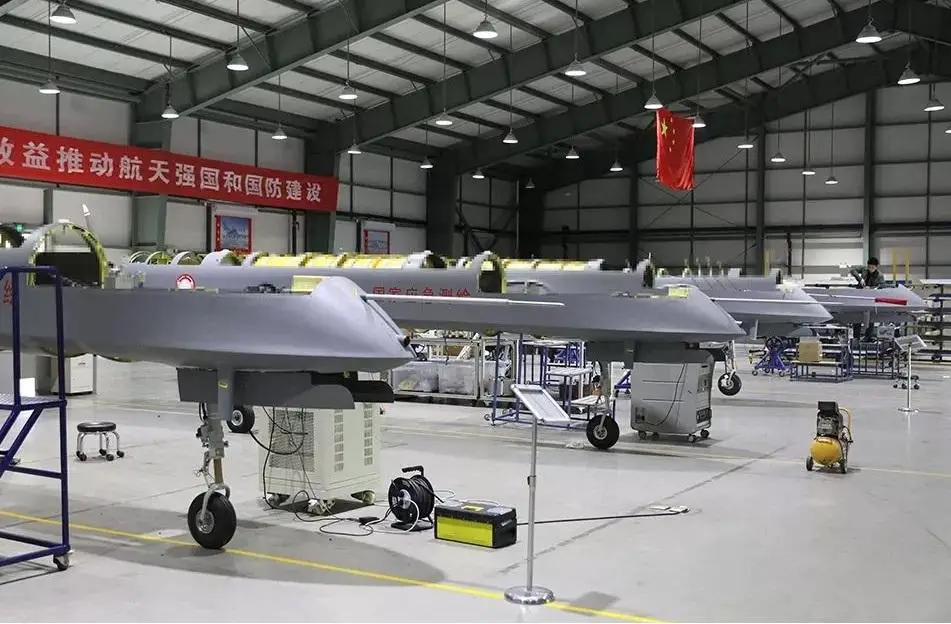Production of China’s CH series unmanned aerial vehicle (UAV) is running at maximum capacity thanks to heavy market demand, with the bestselling CH-4 drone having sold more than 200 units on the international market. CASC Rainbow (Cai Hong, abbreviated as CH) is a series of unmanned aerial vehicles (UAVs) developed by the China Academy of Aerospace Aerodynamics, an entity under the China Aerospace Science and Technology Corporation (CASC). The China Academy of Aerospace Aerodynamics is also known as the 11th Academy of CASC, or 701st Research Institute. The announcement came shortly before the upcoming Airshow China 2022, where the CH series drones will be exhibited. With increasing market demand, the CH UAV company is expanding its production capacity by building a modern, intelligent production line in Taizhou, East China’s Zhejiang Province, which will be fully operating by 2023. Chinese news outlet GlobalTimes reported that Airshow China is scheduled to be held from November 8 to 13 in Zhuhai, South China’s Guangdong Province. In addition to the CH series, China’s Wing Loong series and Twin-Tailed Scorpion series – among a wide collection of other types of drones – are expected to participate in the event.
CH-1 is the first of the Rainbow (CH) series UAVs. CH-2 is the second of the Rainbow (CH) series UAVs and is a development of the earlier CH-1, with identical twin-boom layout. CH-3 is a fixed wing unmanned combat aerial vehicle (UCAV) of the Rainbow series. The CH-4A is a reconnaissance drone while the CH-4B is a mixed attack and reconnaissance system. The CH-5 is the latest UCAV of the Rainbow series, with a wingspan of 21 metres, a payload of 1,000 kg, a maximum takeoff weight of over 3 tonnes, a service ceiling of 9 km, an endurance of up to 60 hours and a range of 10,000 km. The CH-6 is a large UAV with a MTOW of 7800 kg with two variants: a strike variant with 18-hour endurance and 450 kg payload; a reconnaissance variant with 21-hour endurance and 120 kg payload. It was in development in 2021. The CH-7 is a stealthy flying wing UCAV similar to the X-47B, with a 22m wingspan and 10m length. It can fly at 920 km/h and at an altitude of 13,000m. It can fly at 920 km/h and at an altitude of 13,000m. The CH-10 is a tiltrotor UAV. CH-91 is a fixed-wing UAV in twin-boom layout with inverted v-tail and a pair of skids as landing gear. CH-92 is a fixed-wing UAV in conventional layout with V-tail and tricycle landing gear.
Externally, CH-4 looks almost identical to General Atomics MQ-9 Reaper, and the only distinct visual difference between two UAVs is that the ventral fin below the V-tail on MQ-9 is absent on CH-4. There are two versions, the CH-4A and CH-4B. After being upgraded with a domestically developed heavy-fuel engine, the CH-4 armed reconnaissance drone will make its reappearance at the air show. Thanks to the new power source, the CH-4 now has a longer endurance, a longer range, a higher cruise altitude and ceiling, as well as a larger payload capacity. CH-4 is capable of firing air-to-ground missile from altitude of 5,000 meters (~16,400 feet), therefore the aircraft can stay outside of effective range of most anti-aircraft guns. It also allows CH-4 to be able to fire from a position that provides wider viewing area. The CH-4B UCAV has been exported to Myanmar, Pakistan, Egypt, Saudi Arabia, Algeria and Iraq. Myanmar is also producing CH-4 UAV under license with the transfer of technology. Iraq has received an unknown number of CH-4B in early 2015, spurred on battlefield reversals in Mosul and Ramadi to ISIL. Saqr-1 is thought to be mostly influenced by CH-4.















